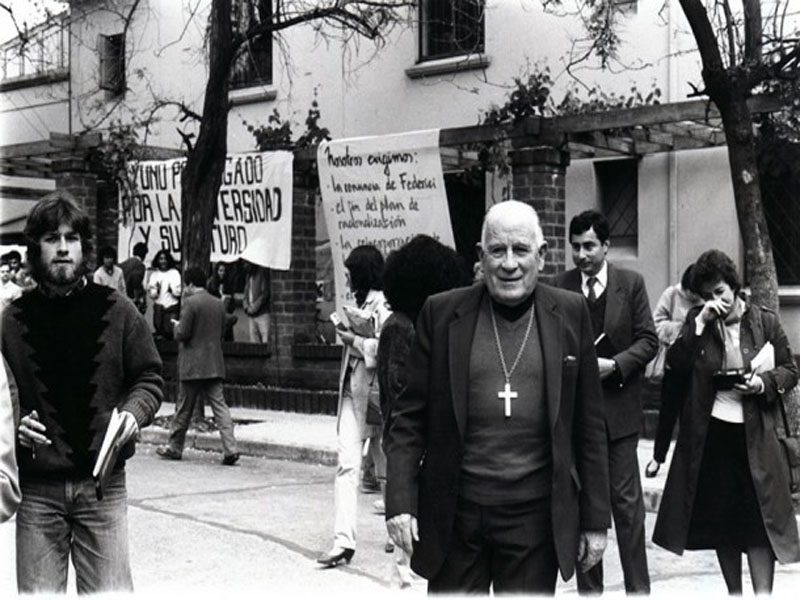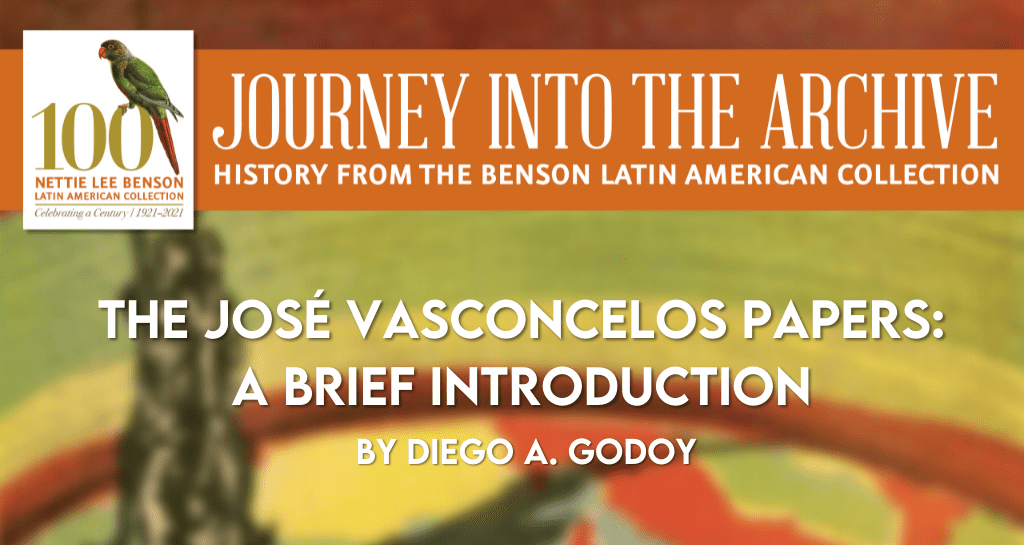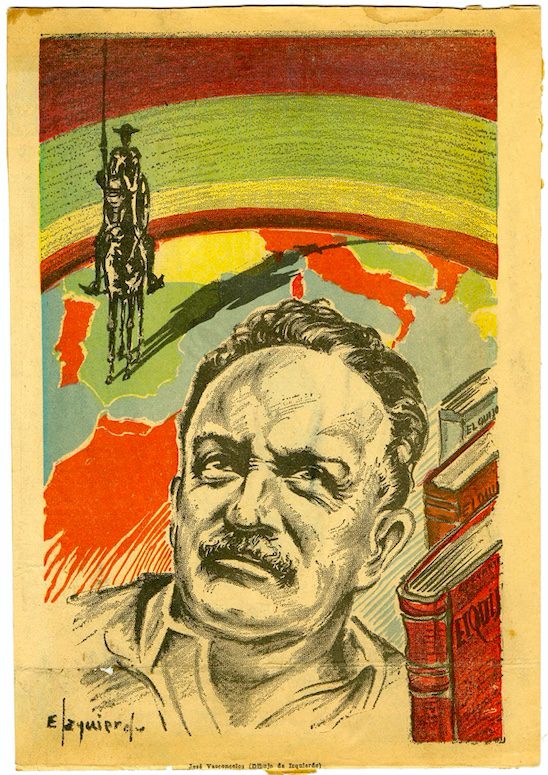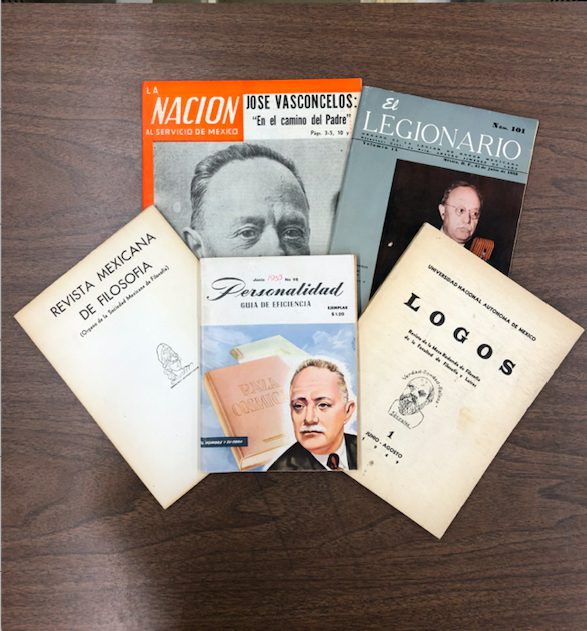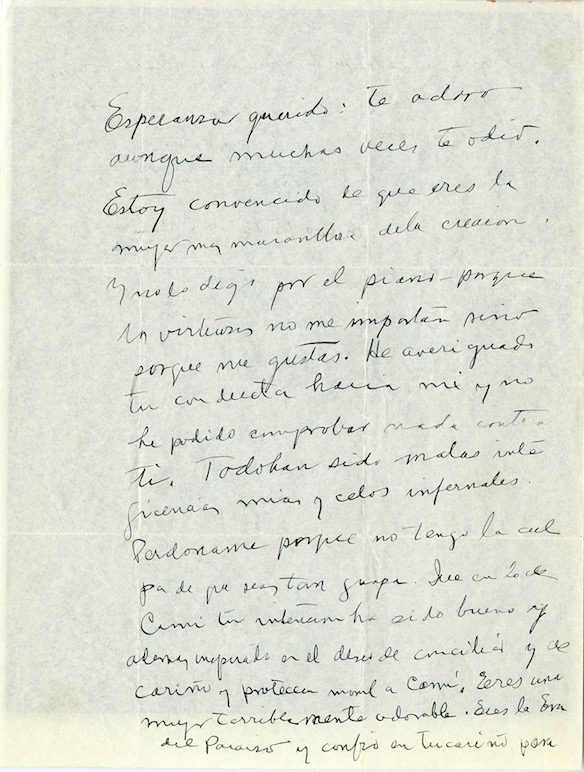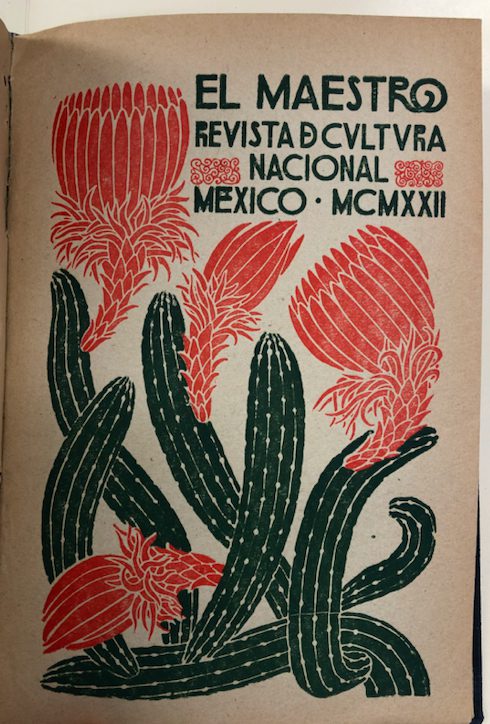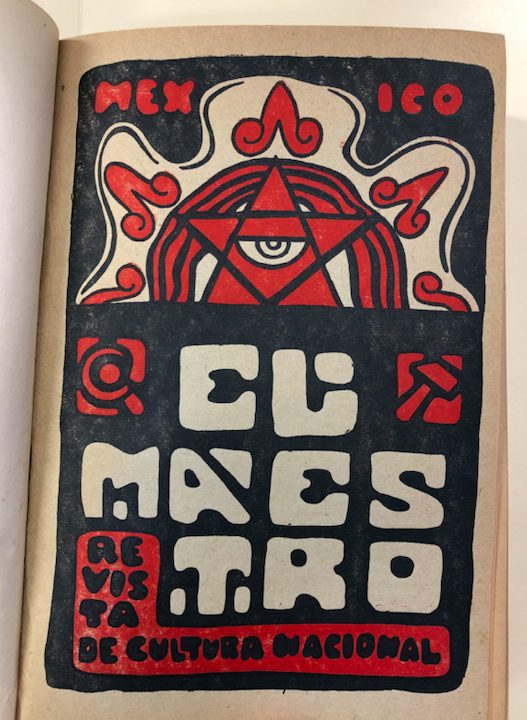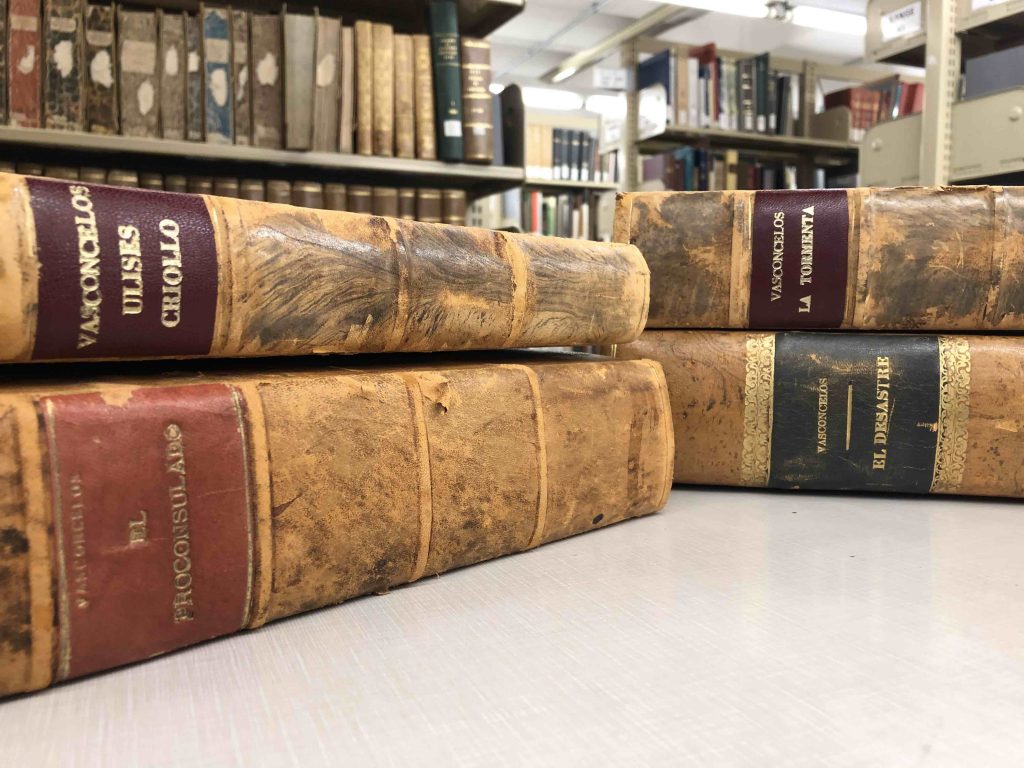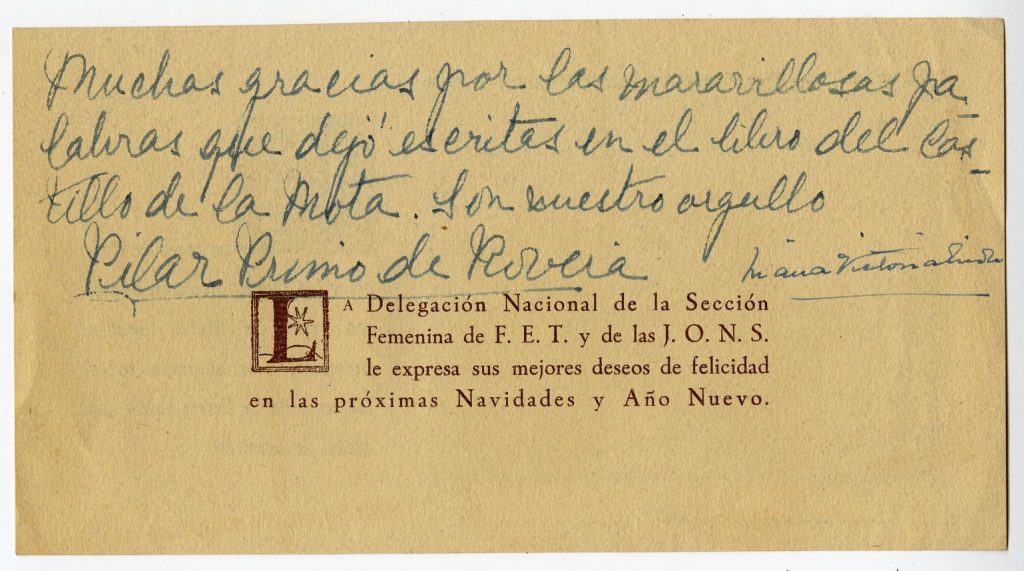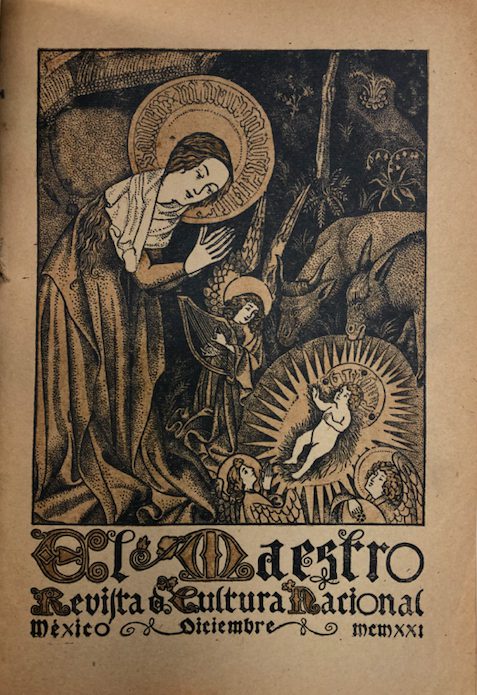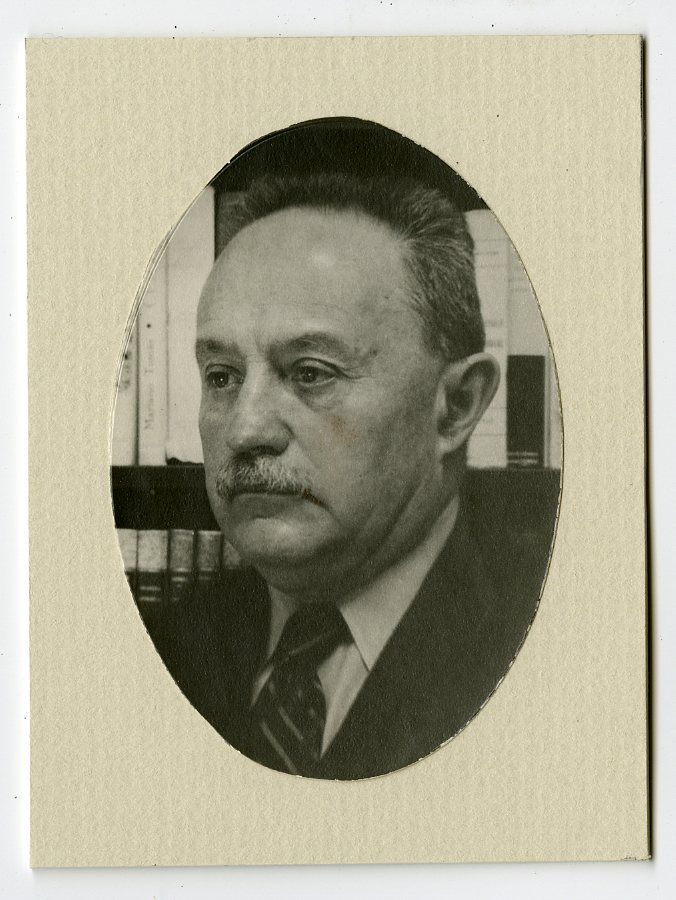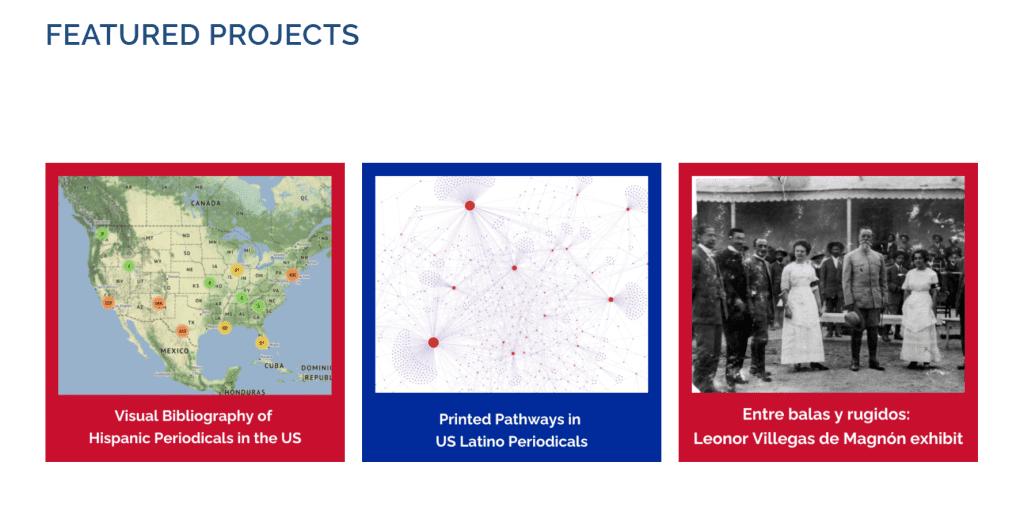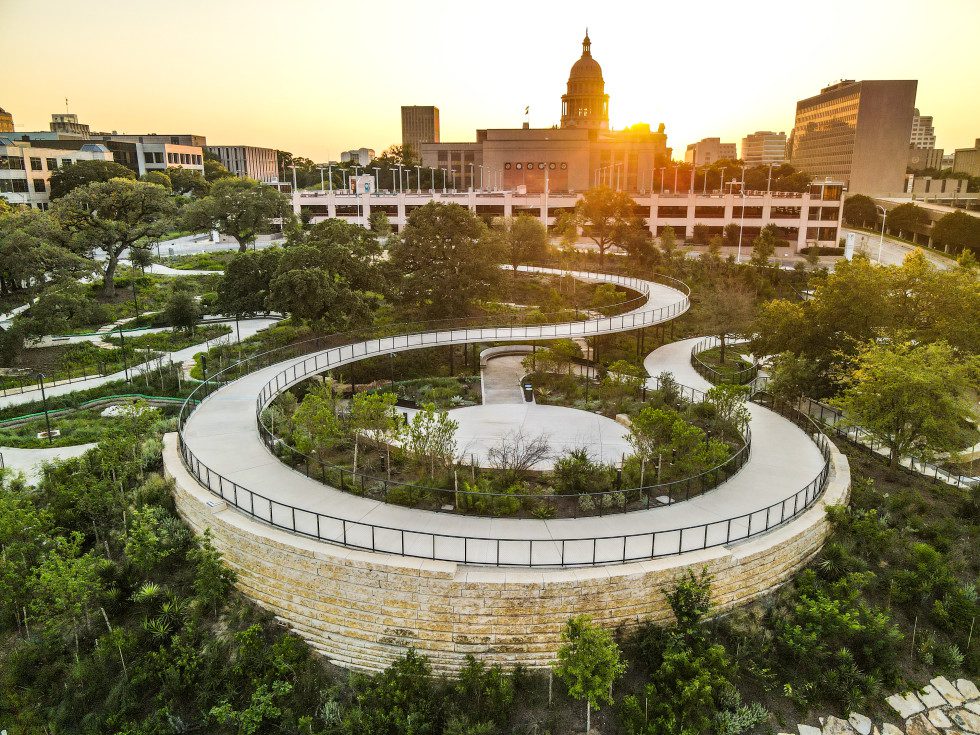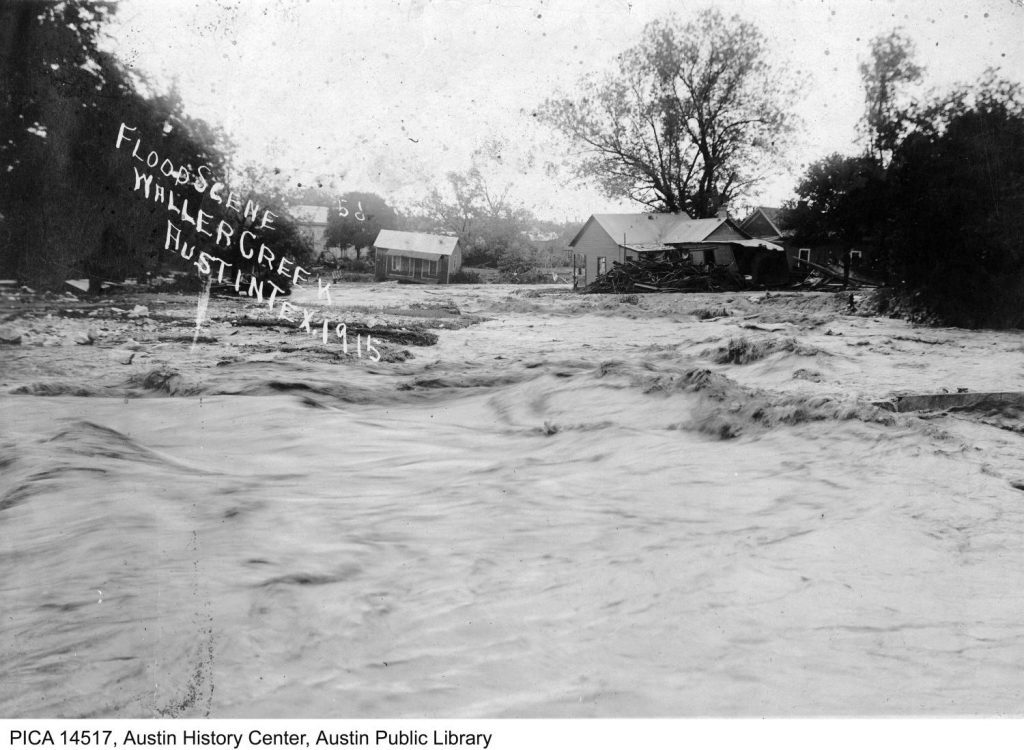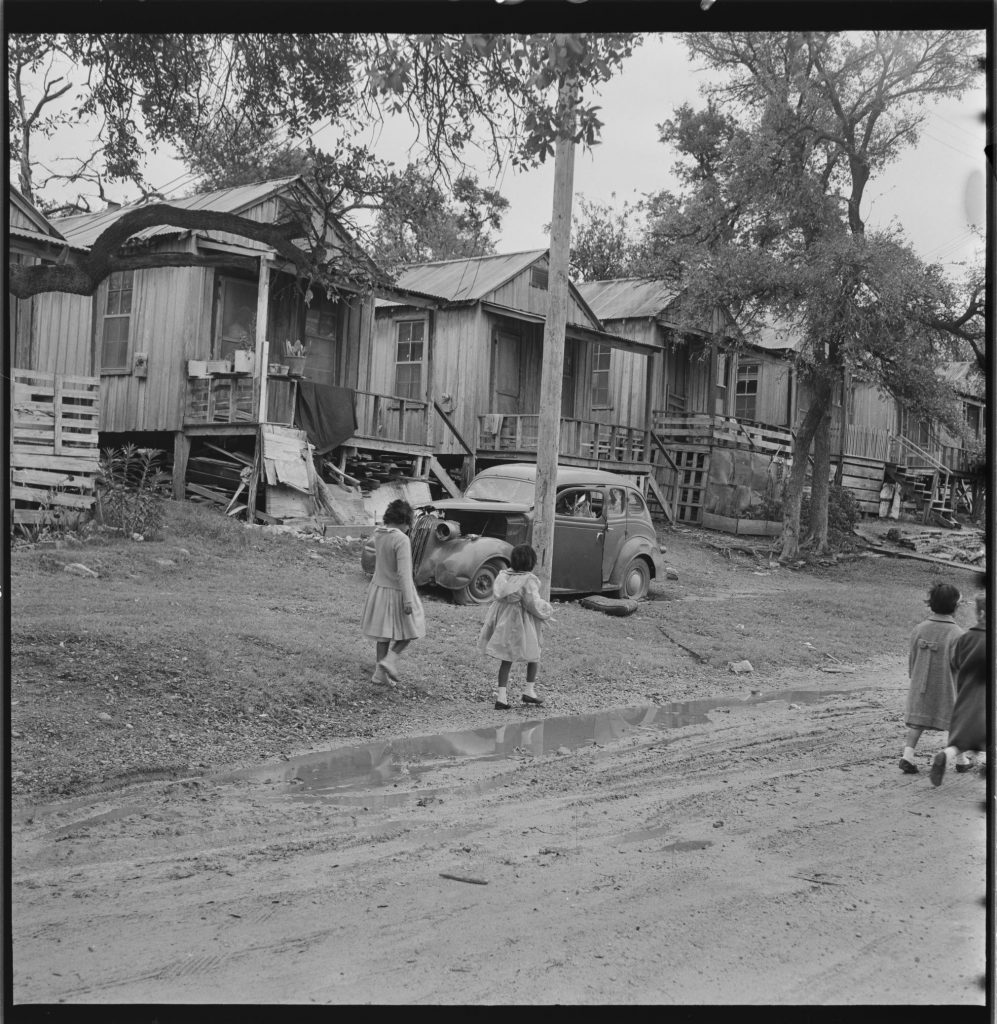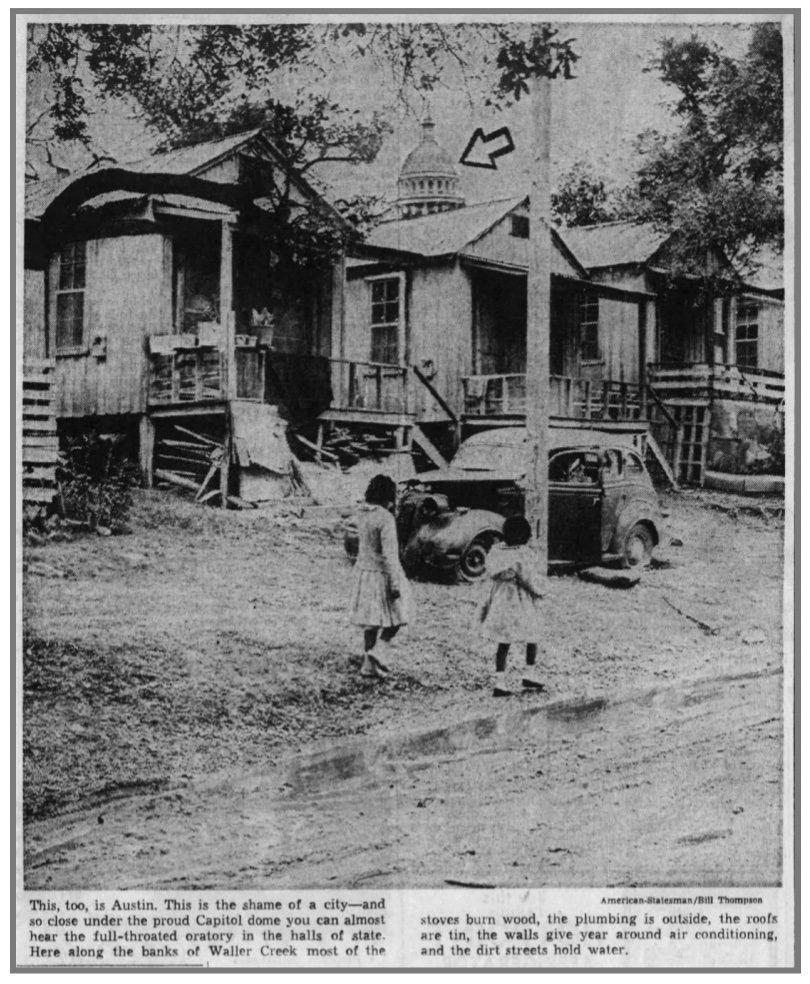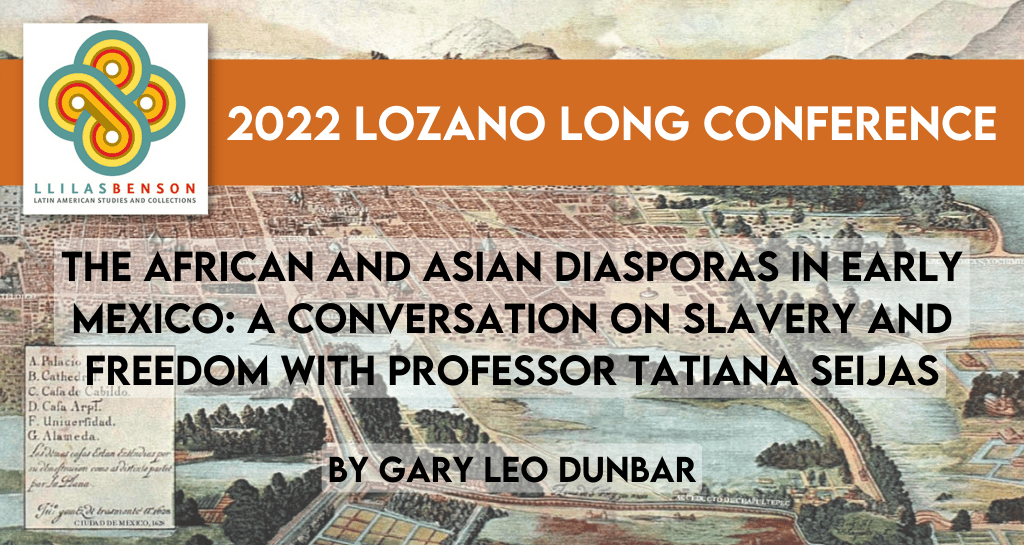
by Gary Leo Dunbar
In honor of the centennial of the Nettie Lee Benson Latin American Collection, the 2022 Lozano Long Conference focuses on archives with Latin American perspectives in order to better visualize the ethical and political implications of archival practices globally. The conference was held in February 2022 and the videos of all the presentation will be available soon. Thinking archivally in a time of COVID-19 has also given us an unexpected opportunity to re-imagine the international academic conference. This Not Even Past publication joins those by other graduate students at the University of Texas at Austin. The series as a whole is designed to engage with the work of individual speakers as well as to present valuable resources that will supplement the conference’s recorded presentations. This new conference model, which will make online resources freely and permanently available, seeks to reach audiences beyond conference attendees in the hopes of decolonizing and democratizing access to the production of knowledge. The conference recordings and connected articles can be found here.
En el marco del homenaje al centenario de la Nettie Lee Benson Latin American Collection, la Conferencia Lozano Long 2022 propició un espacio de reflexión sobre archivos latinoamericanos desde un pensamiento latinoamericano con el propósito de entender y conocer las contribuciones de la región a las prácticas archivísticas globales, así como las responsabilidades éticas y políticas que esto implica. Pensar en términos de archivística en tiempos de COVID-19 también nos brindó la imprevista oportunidad de re-imaginar la forma en la que se llevan a cabo conferencias académicas internacionales. Como parte de esta propuesta, esta publicación de Not Even Past se junta a las otras de la serie escritas por estudiantes de posgrado en la Universidad de Texas en Austin. En ellas los estudiantes resaltan el trabajo de las y los panelistas invitados a la conferencia con el objetivo de socializar el material y así descolonizar y democratizar el acceso a la producción de conocimiento. La conferencia tuvo lugar en febrero de 2022 pero todas las presentaciones, así como las grabaciones de los paneles están archivados en YouTube de forma permanente y pronto estarán disponibles las traducciones al inglés y español respectivamente. Las grabaciones de la conferencia y los artículos relacionados se pueden encontrar aquí.
Beginning in the sixteenth century, Mexico was home to one of the earliest and largest global migrations of Africans and Asians to the Americas, mostly through forced transoceanic slave trading. Generations of enslaved people labored, fought, imagined, and even found freedom in Mexico. Monuments to figures like Gaspar Yanga in Veracruz and Catarina de San Juan in Puebla speak to the rich contributions of Africans and Asians to Mexican heritage and culture. While these “objects of knowledge” stand as a reminder of the legacy of Africans and Asians in early Mexico, much archival work still remains to uncover their history.
Professor Tatiana Seijas is one of the first historians to explore through archival sources both the transpacific and transatlantic migrations of Africans and Asians to Mexico, as well as the lives of their many descendants. She spoke about a 1597 freedom suit brought by Antona, a woman of African descent from the Mexican Pacific, as part of the “(Re)Conociendo Community Rights Through Archives and Memory” panel during the 2022 Lozano Long Conference, Archiving Objects of Knowledge with Latin American Perspectives. I recently had the pleasure and opportunity to sit down with Professor Seijas to discuss her work.
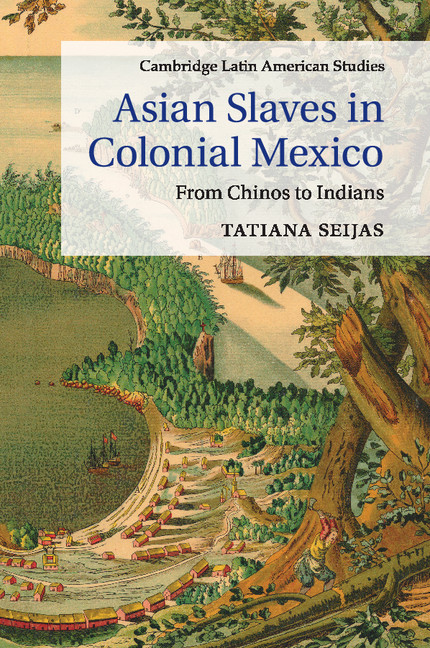
GD: Your 2014 monograph, Asian Slaves in Colonial Mexico, was the first to explore the Asian diaspora to Mexico in detail and has inspired others to continue investigating the experiences of enslaved and free migrants from the Philippines and other regions of Southeast Asia. Have you continued to develop the ideas in that research as well?
TS: When I was researching and writing my first book, it was in the context of thinking through how slavery and freedom shaped the Americas and its history. As you mention, it was the first book to demonstrate that such a significant migration of enslaved Asians had happened, that there was a transpacific slave trade, and to examine their lived experiences in Mexico. I picked up a part of this story, that I didn’t include in the book, in my latest project. Asian-descendant people are the topic of chapter four in my book manuscript, entitled Global Mexico City in the Seventeenth Century. The chapter is about how people from the Philippines, and likely other parts of Southeast Asia, charted out a new business model—an alternative form of barbering in the city.
GD: Working people like Asian-descendant barbers in Mexico City were enmeshed in larger global networks and processes, as the title, Global Mexico City, suggests. How does the focus on Mexico City in this new work help us better understand early globalization, and why did you choose to focus on urban working communities in the seventeenth century?
TS: We have an abundance of books on the sixteenth century, less on the eighteenth, but very few on seventeenth-century Mexico City. What is out there tends to focus on the city as the viceregal capital, Sor Juana’s city, or some aspect of high society, but we don’t have a book that stops to ask questions like: “what did poor people do in order to survive in this place?” I saw a historiographical void that needed addressing. I write to tell the history of the city from the perspective of working people who helped shape its global dimensions.
How can you really understand global processes if you don’t focus on, or at least explain them in, any one place? Global phenomena are always felt locally, right? So, in the case of Mexico City, people from across the globe were brought together in one place. There was international trade, where goods came in and out of the city at a truly global scale. There was constant regional and international migration. So, I wanted to demonstrate how the city and its working people formed integrated parts of this early globalization.
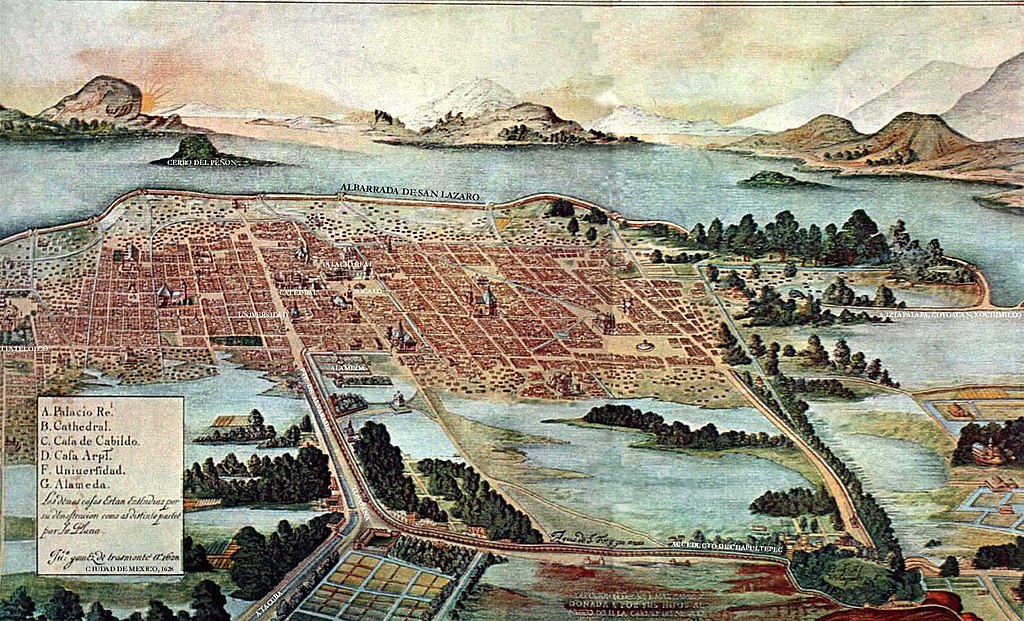
GD: How did seventeenth-century Mexico City, as a thriving global entrepot, compare with other major cities across space and time?
TS: People since at least Aristotle have written about what makes a city “successful,” and usually a thriving city has strong local government that offers key services, sustains infrastructure, and offers legal protections, which encourages people to seek out opportunities. That’s how I chose to organize the book. In the seventeenth century, most people recognized Mexico City as a successful and thriving city. People moved not only from Chiapas and Madrid, but also from Belgium, Goa, and other places around the globe because it was a center of commerce and other economic activities that enabled people to achieve degrees of mobility. I wanted to show how working people sustained early globalization at the local level, to describe what a global city in the seventeenth century looked like, and how it functioned.
Many people can imagine global cities like seventeenth-century London or even New York City today. I wanted to show that Mexico City shared similar qualities—a city made from people drawn from all over the world, willing to hustle to “make it,” despite a high degree of inequality and suffering that also characterizes major global cities. But instead of focusing on abstract generalizations or the traditional seventeenth-century historical figures in the city, I wanted to focus, for example, on the contributions of Nahua women who sustained their families by provisioning city residents with produce from urban gardens. In some ways the book is an ode to urban living and how working people experience globalized spaces.
GD: One of the salient qualities of your work, I think, is your ability to explain large processes like transpacific slavery or globalization by centering the lives of individuals—people who didn’t always have the privilege to sit and write their experiences and perspectives for posterity. How is such a methodology shaped by your perspective on history?
TS: I really appreciate that you identify that aspect of my work. I’m very invested in the experiences of individual people, and I contextualize their lives both in terms of their communities and in terms of larger processes that bring about change over time. Most importantly, my work points out that individuals make big changes happen, not some giant force like colonialism, but that people and their actions are the forces behind changes usually associated with abstract ideas like capitalism.
I’m kind of an old-fashioned historian. I reconstruct the lives of people by reading archival records. I read property records, legal records, all kinds of records. I love all of them. I’m not a legal historian only, or someone who just looks at Inquisition records, I appreciate all surviving documentation and use it to write about people.
Archives allow us to hear people’s ideas and reconstruct their actions—and I really enjoy doing that. My great passion as a historian is figuring out how people lived. Pointing out how things really worked on the ground. Individuals offer windows into the past, but the wonderful thing about writing about everyday people is that they inspire readers to submerge themselves in experiences that might otherwise be unimaginable.
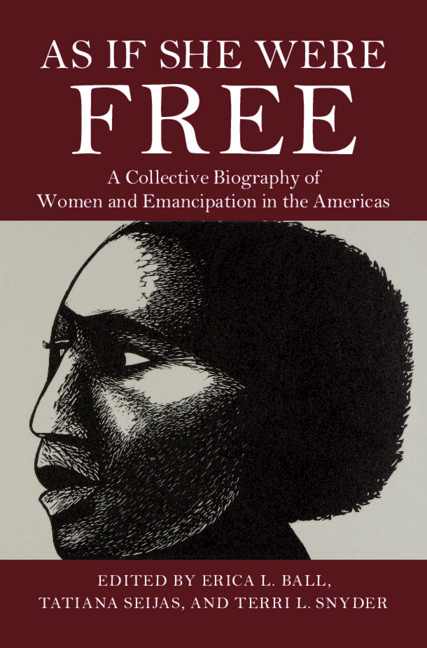
GD: Yes – for instance, your 2020 edited volume, As If She Were Free, with Erica Ball and Terri Snyder, brings together a remarkable cast of historians to offer biographies of twenty-four women of African descent who sought freedom from across the Americas. How did you all conceive of such a project?
TS: We noticed that historians studying regions across the Americas were turning to biographies and we wanted to bring some of those scholars under the umbrella of one project and focus on the experiences of African-descended women. The project allowed us to point out similarities across time and space—that there was a constancy of unfreedom, but also a constancy of people seeking out freedom and what that meant in different contexts.
GD: How did thinking through slavery as a hemispheric experience show both differences and continuities, or change over time?
TS: For the majority of people who arrived via the transatlantic slave trade, a critical part of their reality was dictated by the fact that they were legally owned by someone else. In some ways freedom has always been defined vis-a-vis the opposite, slavery, and so it is difficult to think about freedom and slavery outside the context of property. But I think many of the authors in this book sought to define freedom in different ways. For example, the chapter by Sophie White shows how in French Louisiana it was almost impossible for an enslaved person to purchase their own freedom, as was more common elsewhere in the Americas. But enslaved people still lived aspects of their lives in a free manner. They maintained a degree of economic freedom, for instance. So, there were many, sometimes contradictory, ways that people experienced freedom within the legal framework of chattel slavery.
Narrating the experiences of different people allows us to see the nuances of how diverse individuals tried to circumvent the reality of slavery. Their stories are part of a long history that’s related to the creation of race and the hardening of racial divisions across the Americas.
GD: This point seems critical for understanding how historical legacies have shaped many of the problems societies across the Americas face today, especially concerning race and gender. How has the book been received by those using it in the classroom to explore such issues?
TS: Many colleagues have approached me and have told me how well it works in the classroom—whether they work on Virginia, Mexico, Brazil, Peru, or even the twentieth century United States. Some might only pick out a few chapters, others use the entire book, but undergraduates really get a lot out of these stories. Studying slavery can be depressing, but through these women’s experiences they get to see how people survived, and what they did in the face of very difficult situations. I really loved working on the project, and especially enjoyed helping scholars refine their biographies. I’m thrilled now to hear that so many scholars and students find it a valuable resource.
Each chapter in the book takes on the issue of freedom and gender differently, both before and after abolition. The liberal republicanism of the late 18th through the 19th centuries declared that only property owners could be the citizens who merited participation in government. It was interesting for us to point out that freedom, if defined as citizenship, left out women who couldn’t own property, or be part of the body politic. Women couldn’t even vote in some places in Latin America until the 1950s and 1960s!
The way that I teach this book is also related to the constancy of slavery. Students need to grapple with the legacy of slavery’s violence, to understand that slaveowners had horrifying control over enslaved people’s physical bodies, be it in 1570s Mexico, 1680s Brazil, or 1810s Alabama. Claiming freedom was likewise a hemispheric constant: we see emancipatory actions repeated across time by the enslaved whenever and wherever states sustained that people could be held as property. I know the discourse of Tannenbaum is still with us, still in the shadows; we’re rewriting history to make more complex and nuanced comparisons and demonstrate similarities.
GD: The book clearly seeks to minimize spatial difference and treat slavery and freedom as a shared hemispheric phenomenon. What do you say to those who tend to break up the history of slavery into different temporal categories like “Charter Generations” and “First” or “Second Slavery?”
TS: I think of there being one history of the African diaspora that began in the late 1490s and that continues today, and that it is one of the shaping features of history in the Americas. The history of slavery in the Americas is the story of chattel slavery. That’s something we wanted to point out in the book, that scholars have sometimes taken the conversation in a different direction and problematically conflated this reality with other forms of bonded labor. The one central history that we’re all invested in, in the project and I think in much of our work, is understanding what it meant legally, socially, economically, and personally to have the experience of being someone who could be owned and sold at market.
GD: Antona’s 1597 freedom suit that you will present at the Lozano Long Conference seems like an extension, in some sense, of the As If She Were Free project. How did helping the various authors develop their biographies inspire you to look at this particular case?
TS: The authors of As If She Were Free definitely inspired my choice for the conference. The panel is about understanding community rights, which are necessarily rights claimed and fought for by individuals. The story of Antona articulates that struggle – of how she survived the middle passage and rebuilt her life by joining a community of people who supported her legal efforts to keep her family together, and in so doing strengthen the community as a whole.
Gary Leo Dunbar is a doctoral candidate in Latin American history. His research examines the history of slavery, abolitionism, and citizenship in the Americas, focusing on Pacific Mexico. Gary holds a bachelor’s degree in anthropology from the University of Oregon and completed his master’s work at Central Michigan University (CMU) in the U.S. and Benemérita Universidad Autónoma de Puebla (BUAP) in Mexico.
The views and opinions expressed in this article or video are those of the individual author(s) or presenter(s) and do not necessarily reflect the policy or views of the editors at Not Even Past, the UT Department of History, the University of Texas at Austin, or the UT System Board of Regents. Not Even Past is an online public history magazine rather than a peer-reviewed academic journal. While we make efforts to ensure that factual information in articles was obtained from reliable sources, Not Even Past is not responsible for any errors or omissions.
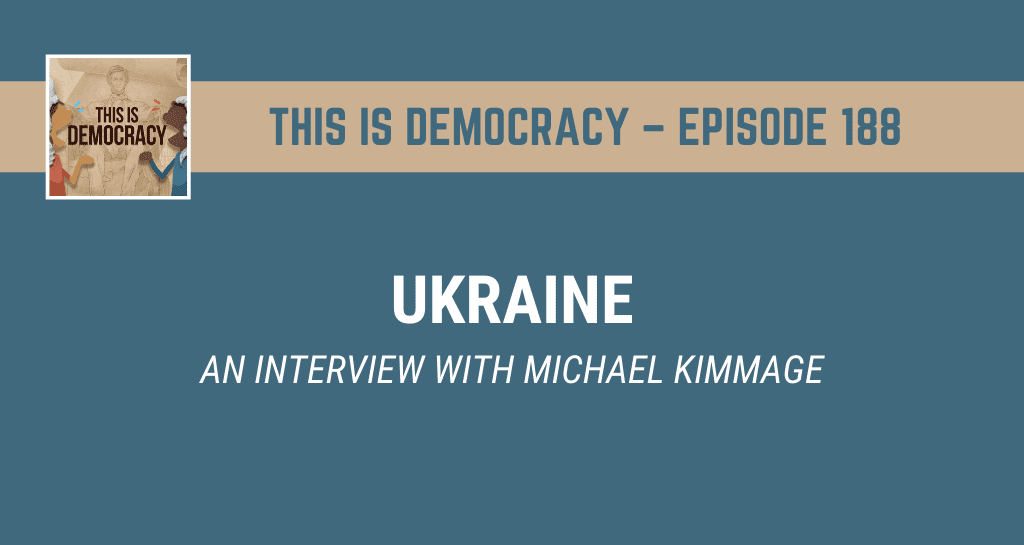
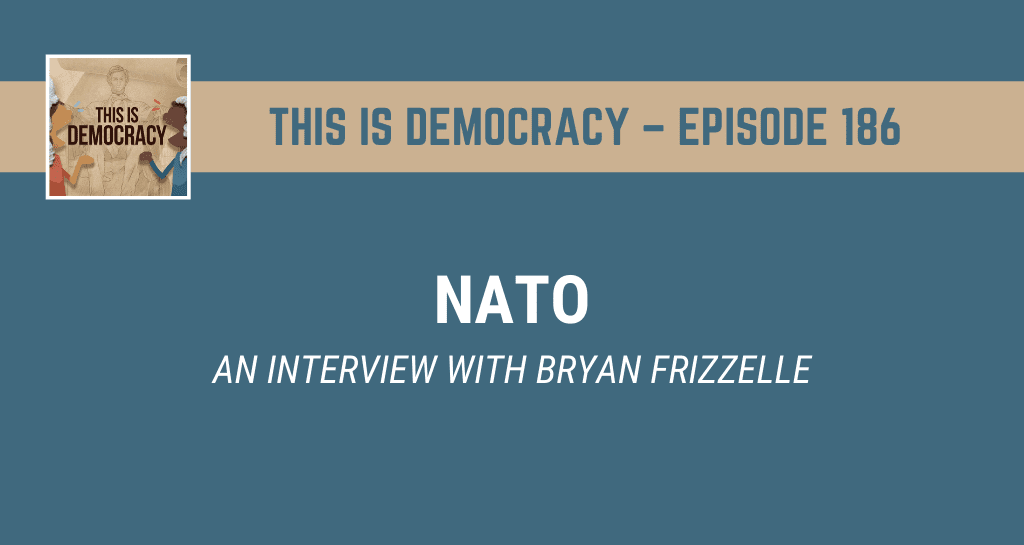
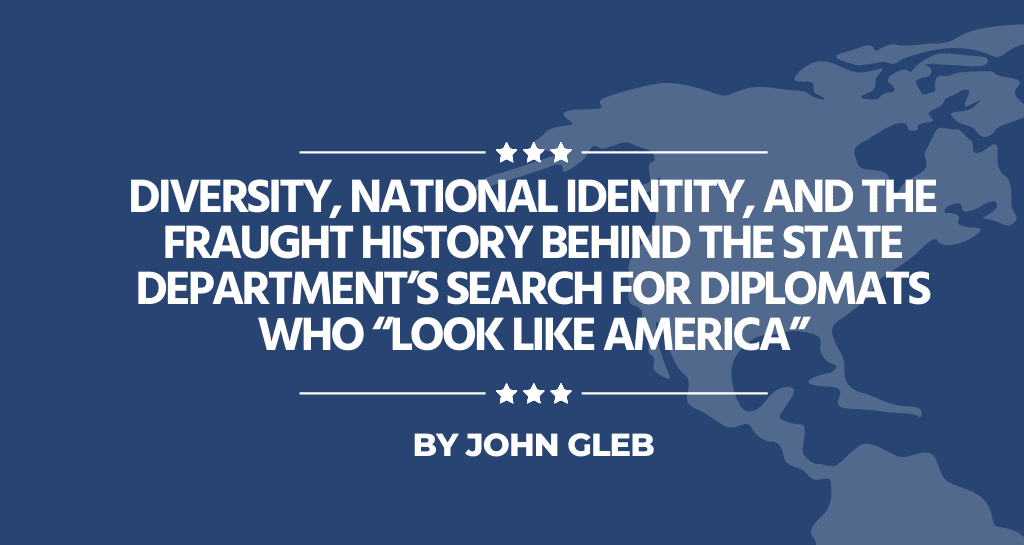


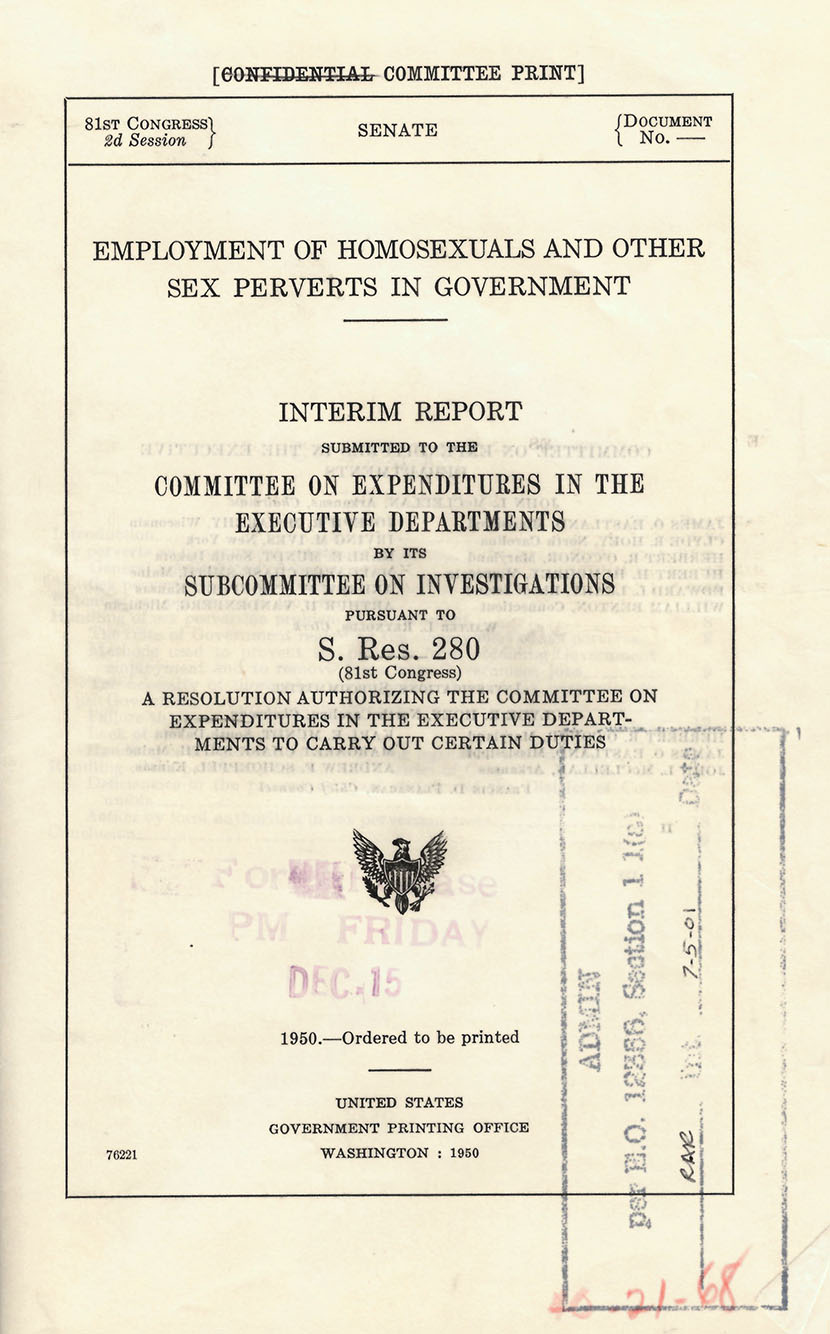
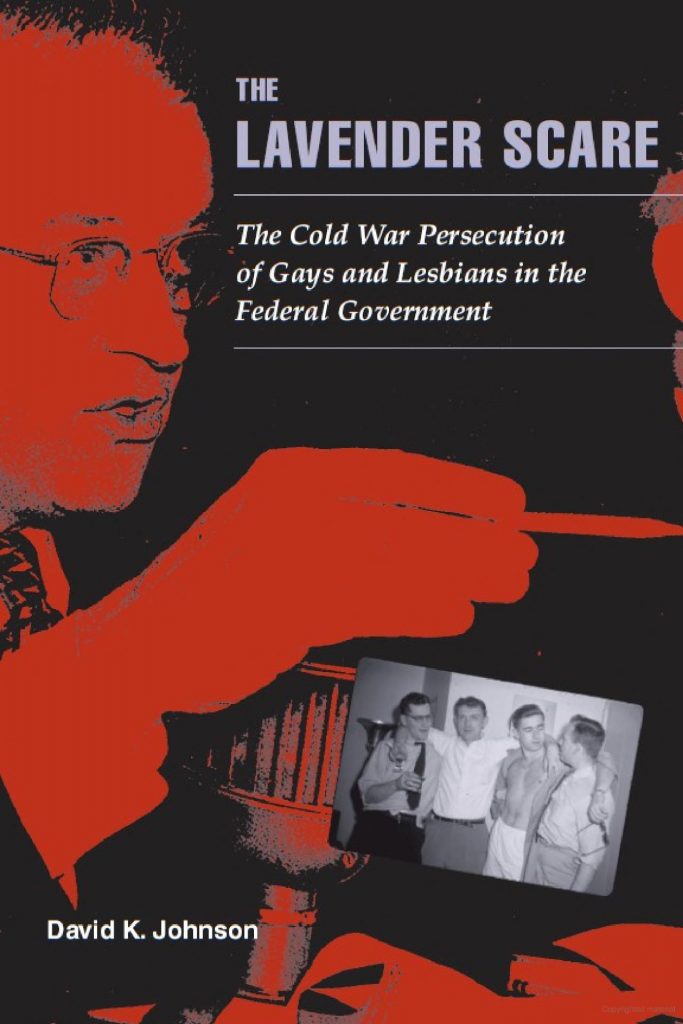
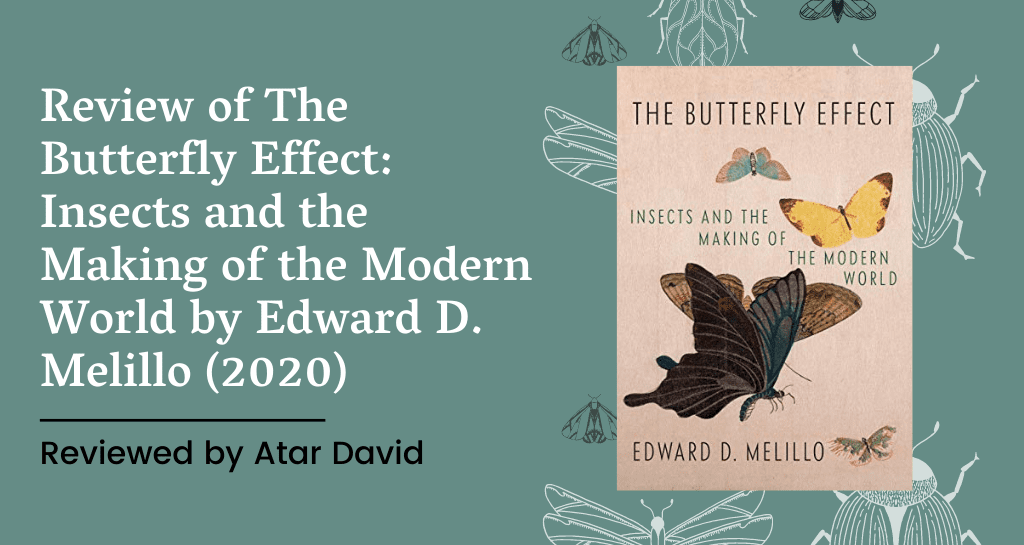
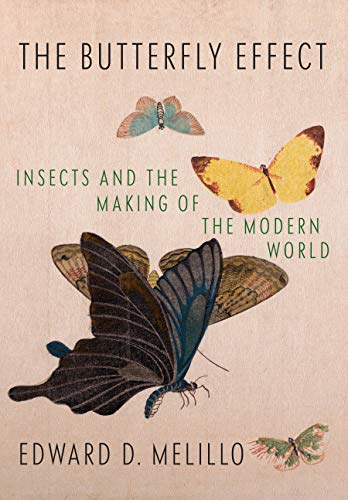
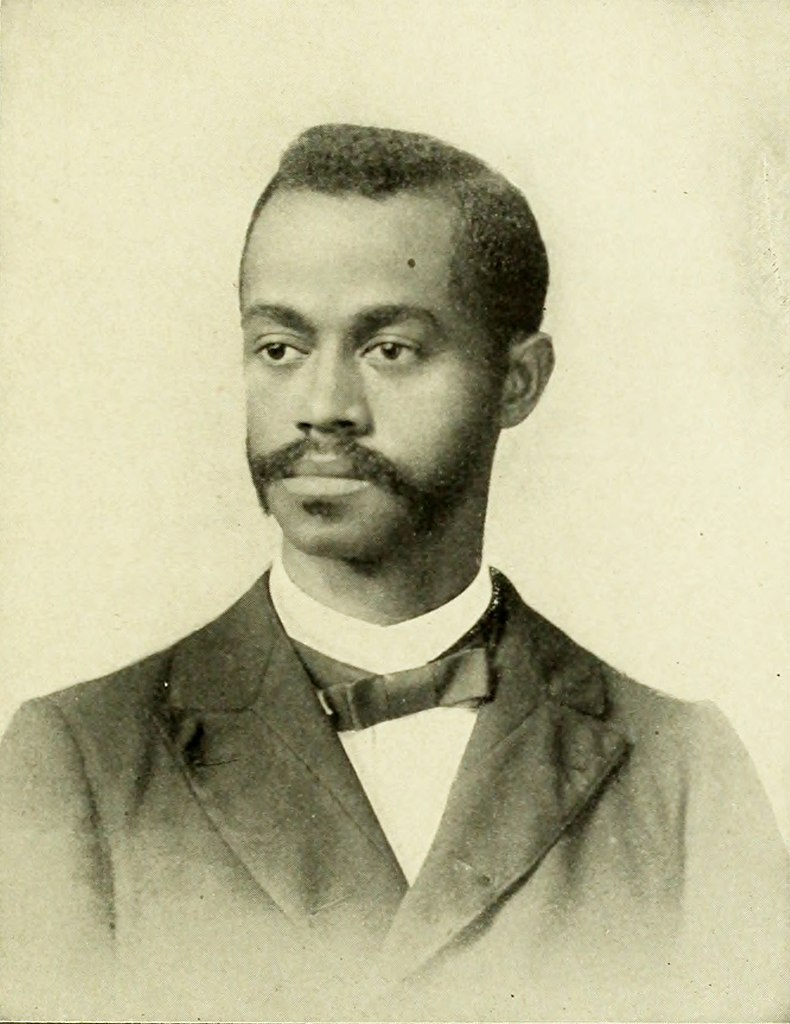
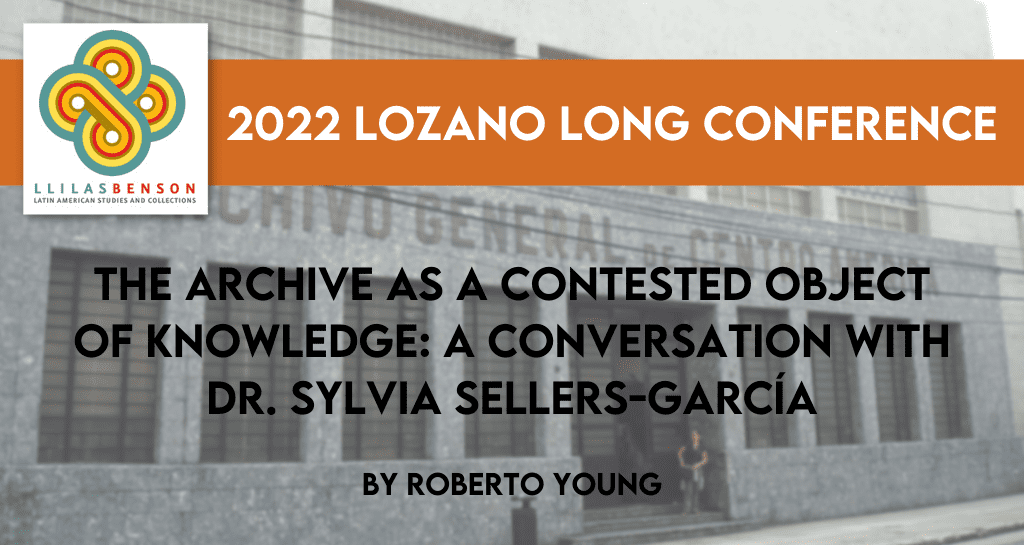

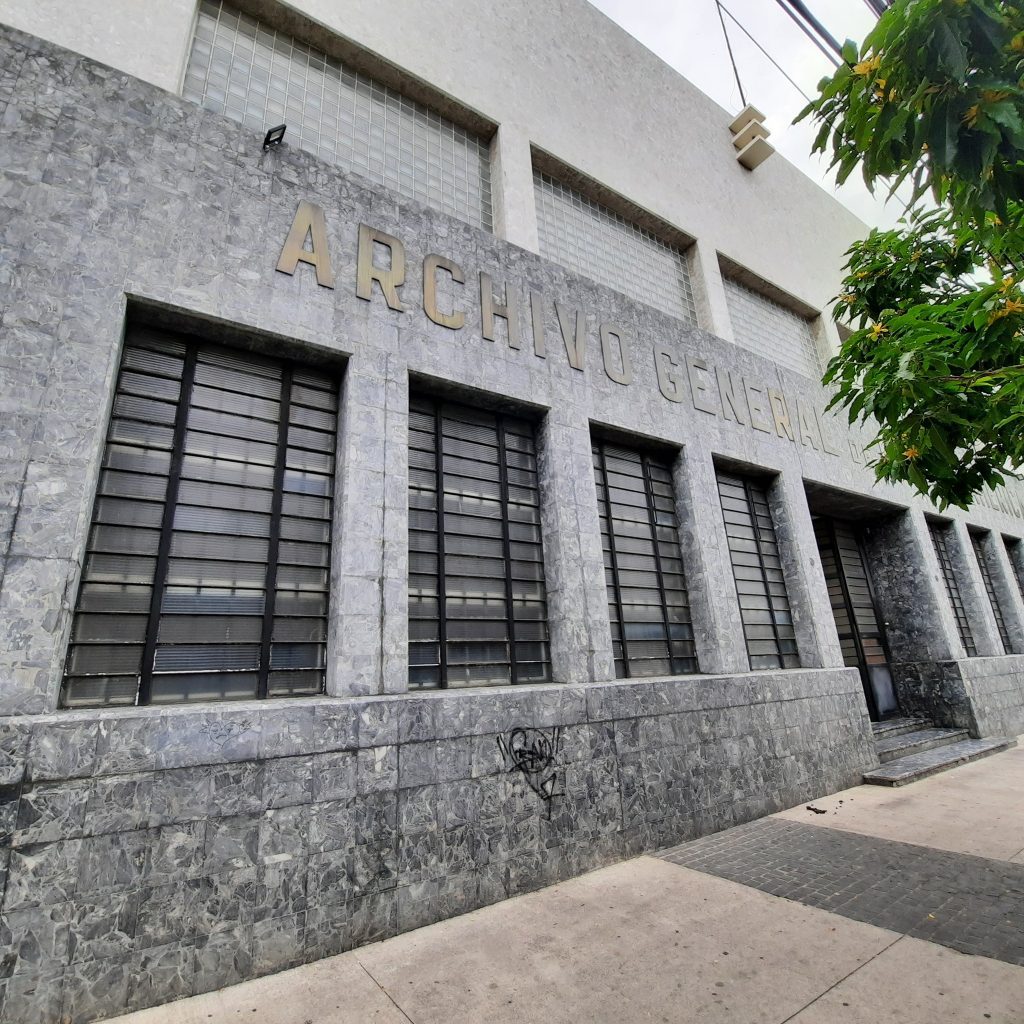
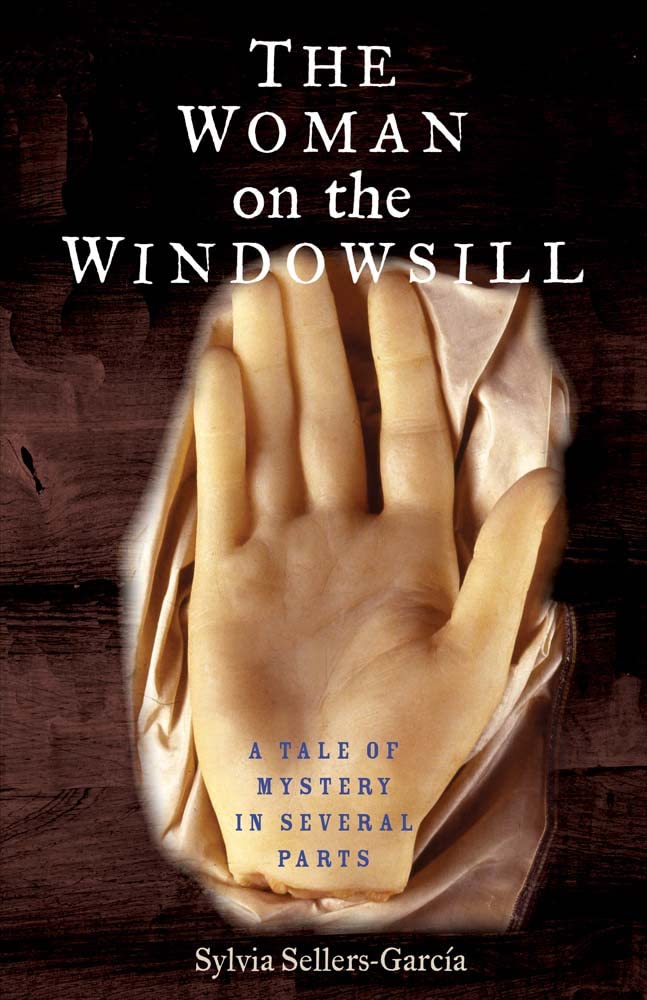
![“En las urgencias de la realidad [Within the urgencies of reality]:” Perspectives about the Vicaría de la Solidaridad](https://notevenpast.org/wp-content/uploads/2022/03/Lozano-Long-Conference-1-1.png)
